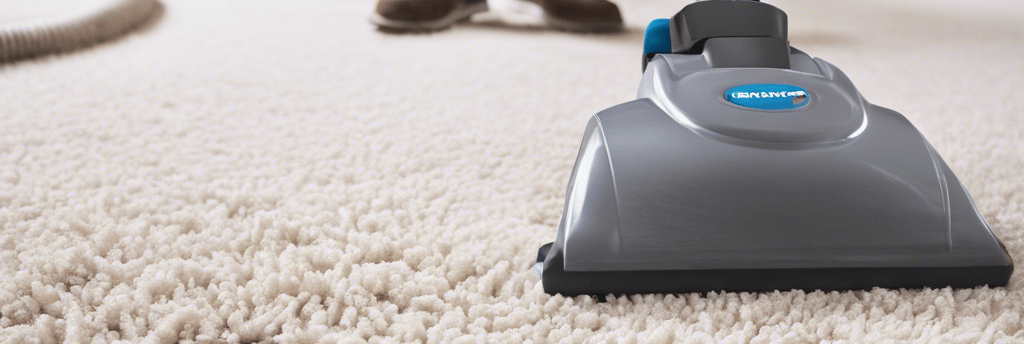Understanding the Difference Between Natural and Synthetic Fibres in Carpet Cleaning
Matt Brown
12/30/20244 min read


Introduction to Carpet Fibres
Carpet fibres play a crucial role in defining the aesthetics, comfort, and durability of carpets. These fibres can be broadly categorized into two main types: natural fibres and synthetic fibres. Each category presents distinct characteristics, which are important for carpet cleaning professionals to understand when choosing appropriate cleaning methods and products.
Natural fibres include materials such as wool, cotton, jute, and sisal. Wool, a popular choice, is known for its resilience, insulation properties, and luxurious feel. It also possesses natural stain resistance due to the lanolin coating on the fibres. However, wool can be sensitive to moisture and may require specialized cleaning to avoid shrinkage or damage. Cotton, while softer and more absorbent, tends to stain easily and may not withstand heavy foot traffic, making it less suitable for high-traffic areas.
Synthetic fibres, on the other hand, are manufactured from chemical compounds, leading to increased durability and stain resistance. Common synthetic fibres used in carpet production include nylon, polyester, and polypropylene. Nylon is particularly favoured for its strength and versatility, making it an excellent choice for residential and commercial carpets alike. Polyester offers vibrant colour options and a plush texture but may lack the longevity of nylon. Polypropylene, also known as olefin, is highly resistant to moisture, making it ideal for indoor and outdoor settings, though it tends to be less durable than nylon.
Understanding the differences between natural and synthetic carpet fibres is essential for carpet cleaning professionals. This knowledge enables them to recommend appropriate cleaning techniques and products, ensuring not only effective dirt removal but also the maintenance of carpet longevity and appearance. By taking into account the specific fibre type, cleaners can deliver tailored services that align with clients’ needs and the requirements of the carpets themselves.
Importance of Knowing the Differences in Carpet Fibres
Understanding the distinction between natural and synthetic fibres is critical for both consumers and professionals in the carpet cleaning industry. Natural fibres, such as wool, cotton, and jute, each possess unique characteristics that influence their cleaning requirements, while synthetic fibres like nylon, polyester, and olefin offer different advantages and limitations. Recognizing these differences is essential when determining cleaning techniques and selecting appropriate products, as each fibre type reacts differently to various cleaning methods and chemicals.
For instance, natural fibres tend to absorb moisture and can be more susceptible to shrinkage and damage when exposed to harsh cleaning agents. In contrast, synthetic fibres are often more resilient and stain-resistant, but may also require certain cleaning agents to avoid degradation over time. By comprehending these properties, cleaning professionals can tailor their approaches to fit the specific needs of the carpet material, enhancing the overall effectiveness of the cleaning process. This knowledge not only ensures a more thorough clean but also prolongs the lifespan of the carpets.
Moreover, using incorrect cleaning methods or chemicals on different fibres can lead to significant risks. An inappropriate choice, such as applying a strong alkaline cleaner on wool carpets, can result in color loss or texture damage. Such mistakes can tarnish a cleaning business’s reputation and lead to customer dissatisfaction, ultimately impacting their bottom line. Hence, being informed about the unique behaviours and reactions of various fibres is vital for achieving optimal cleaning results and maintaining client trust. Recognizing these distinctions enables businesses to position themselves as knowledgeable and reliable service providers, fostering customer loyalty through effective service delivery.
Cleaning Methods for Natural and Synthetic Fibres
Effective carpet cleaning methods play a crucial role in maintaining the integrity and appearance of both natural and synthetic fibres. The choice of cleaning technique often hinges on the type of fibre involved, as each comes with its own set of characteristics and requirements. For natural fibres, such as wool or silk, gentle cleaning methods are advised to prevent damage. One popular technique is steam cleaning, which utilizes hot water extraction to lift dirt and grime while minimizing the risk of shrinking or fading. The high temperature of the steam helps to sanitize the fibres without the harsh chemicals that could compromise their quality.
On the other hand, synthetic fibres, such as nylon or polyester, are generally more resilient and can withstand stronger cleaning agents. For these types, dry cleaning methods may be more effective, especially for stubborn stains. Dry cleaning typically employs a solvent-based solution that loosens dirt and debris without the use of moisture, thus preventing any risk of water damage. Additionally, hot water extraction can also be utilized on synthetic fibres due to their durability, providing a thorough cleanse for high-traffic areas.
When it comes to high-end natural fibre carpets, such as those crafted from fine wool or silk, it is advisable to opt for specialized cleaning solutions that cater to their delicate nature. Professional services often recommend routine maintenance, including vacuuming and spot cleaning, to adhere to best practices. In contrast, synthetic carpet options offer more flexibility and can endure more aggressive cleaning methods, including the use of commercial-grade steam cleaning machines.
Overall, understanding the specific needs of each fibre type will enable homeowners to optimize their carpet cleaning strategies effectively. By employing the appropriate methods and adhering to recommended practices, one can extend the lifespan and maintain the appearance of both natural and synthetic fibre carpets.
Choosing the Right Chemicals for Carpet Cleaning
When it comes to cleaning carpets, selecting the appropriate chemicals is critical, particularly in relation to the type of fibre involved. Natural and synthetic fibres respond differently to various cleaning agents, which can significantly influence the cleaning process's efficacy and the carpet's longevity. A nuanced understanding of these interactions can help avoid damage and ensure optimal results. For instance, wool, a natural fibre, possesses unique properties that require gentle cleaning solutions to maintain its integrity. Harsh chemicals can strip wool of its natural oils, leading to dryness and eventual degradation.
In contrast, synthetic fibres such as nylon and polypropylene are more forgiving when it comes to chemical treatments. Nylon carpets, known for their durability, can withstand stronger cleaning agents, which effectively eliminate dirt and stains without compromising structural integrity. Chemical products containing alkaline agents can be particularly effective for these fibres, as they can break down greasy residues. However, caution is still advised, as using excessively harsh solutions may lead to discolouration or fibre damage over time.
Common mistakes made in carpet cleaning often stem from a one-size-fits-all approach to chemicals. Cleaners sometimes mistakenly apply the same products across different types of carpets, disregarding the specific needs of each fibre type. For example, using a potent solvent on a wool carpet can result in irreparable harm. Instead, it is advisable to opt for pH-neutral cleaners specifically designed for wool, while more resilient products can be employed on synthetic fibres. A comparative analysis of cleaning agents reveals that enzyme-based cleaners are particularly effective on wool, while nylon carpets benefit from products containing surfactants. Understanding the interactions of these chemicals with respective fibres enhances cleaning efficacy while safeguarding the carpet's structure.
